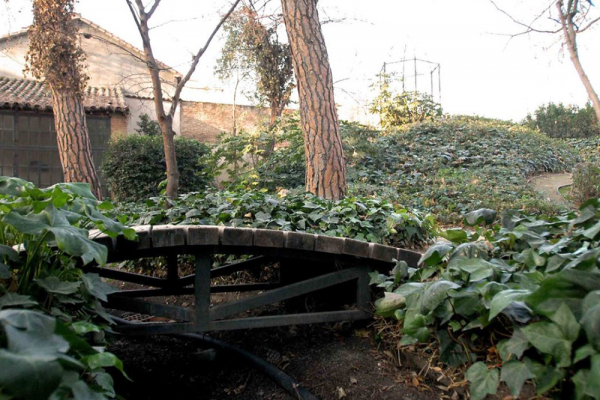Can plants suffer stress?
The answer to this question is yes, in fact the Research Group led by Leonardo Casano studies the response of plants to stress, which is difficult to control and to relieve. That´s affecting to plant diversity.
As he says, ‘Our group is dedicated to studying what within Plant Physiology is known as ‘Stress Physiology’ which basically consists in determining how plants respond to unfavorable environmental conditions. For more than ten years we have focused our work on the Physiology of the stress of lichens and especially seaweed that are part of these symbiotic organisms. Obviously, it is a group of plants very little studied, compared to vascular plants and especially those of agricultural interest, but that presents a very wide geographical distribution since we find them in all terrestrial ecosystems and are able to tolerate the most varied adverse situations, even extreme ones. That's why we believe we can find in lichens some different stress tolerance mechanisms than those known in the rest of the vegetables.'
Plants are essentially immobile, whose structure and operation has evolved to be able to respond to environmental conditions: temperature regime, rainfall, hours and light intensity, presence of other organisms, etc. quite reproducible in historical terms, but which are very variable in the short and medium term. For example, let's think about how different the intensity of light that reaches a plant throughout the day will be, or how different it will be, or how different the amount of water available between one rain and another or between the different seasons will be.
Stress can cause a disruption in the normal functioning of the plant and usually a defensive response by the plant. Among the main factors of abiotic stress we find: drought, extreme temperatures, excess light, salinity in the soil, presence of contaminants, etc. Competition with other plants, action of pathogenic microorganisms, and predators, etc., are the main factors of biotic stress.
As the professor explains, in Spain we have a great diversity of ecosystems and therefore potentially adverse environmental conditions, ‘but probably the stress of the greatest impact on plants is that caused by drought, associated in many cases with the salinization of many soils, especially irrigation. This is a big problem on a global scale, not just in Spain. Therefore, the scientific community has a trong interest in studying the mechanisms of tolerance to water stress, and, in this context, our research group on how some lichens and their seaweed are able to become dehydrated and rehydrated daily, without losing their vitality'.
 |
| Grupo de investigación 'Respuestas de las plantas a condiciones de estrés' |
In the face of all these agents that can reduce it, it is most likely that any plant, for most of its life, is facing a stressful situation that is an environmental condition that could adversely affect its functionality and eventually its survival. Therefore, as Casano says, throughout the evolution, plants have developed various mechanisms of tolerance, resistance, and even evasion, to different types of stress.
The effects of these adverse or streesful situations are being exacerbated as a result of global warming, so the ‘anti-stress’ mechanisms developed by many plant species are being overtaken by climate change, with the consequent loss in crop productivity and plant biodiversity.
'Generally speaking and in natural environments, it´s extremely difficult, if not impossible, to prevent the negative effects of any type of stress, since the intensity of these effects will depend on the intensity and duration of the stress situation and the capacity of defensive response of the plants’ explains Leonardo.
In man-made ecosystems as an agricultural field and in a specific situation, with a crop that has a specific genetics and physiology, we could only act on the environmental factor. For example, if a cultivated plant develops symptoms of insufficient irrigation stress, we could improve the situation by watering. Or if favorable conditions arise for the development of a pathogen, preventive treatments could be done to prevent such development', he says.
Publicado en: Inglés
